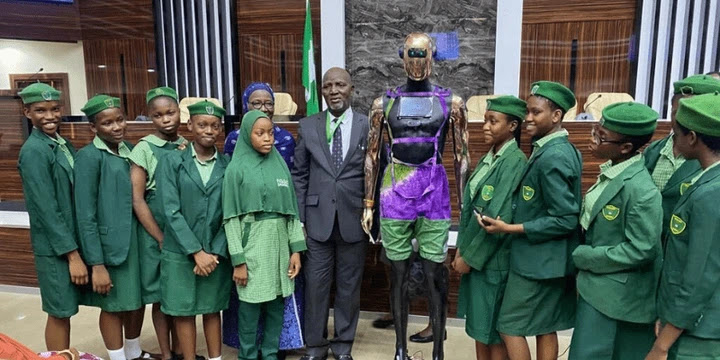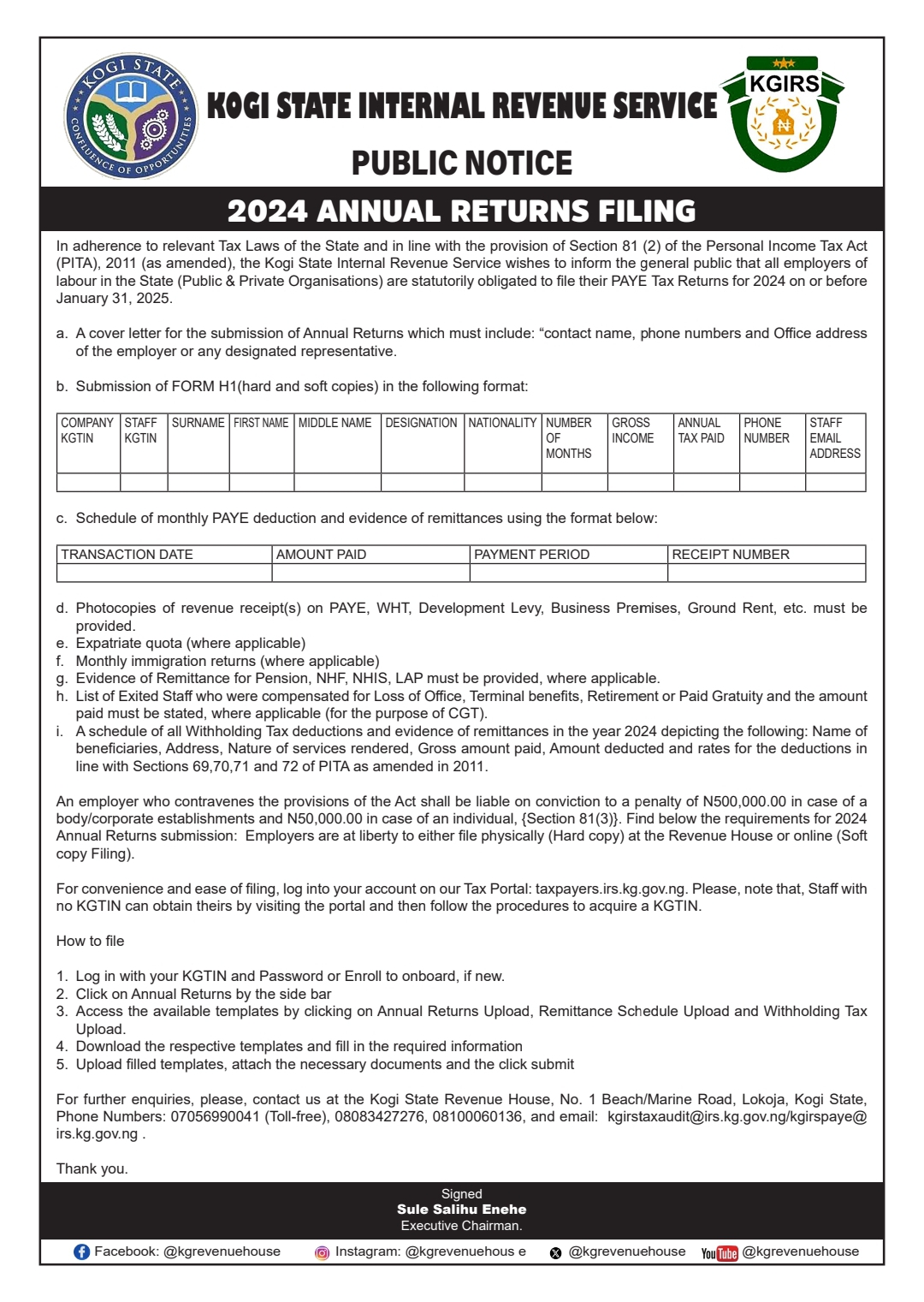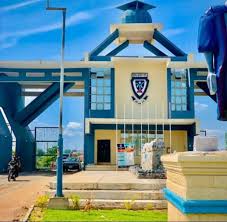


Kogiflame
Federal Government Girls’ College (FGGC) Sagamu, Ogun State, have built an AI robot called Okikiola-Sagamu, also known as Kiki-Saggy.
The project which involved 10 students and a few staff members was unveiled to the Permanent Secretary of the Federal Ministry of Education, David Adejo Andrew, in Abuja.
In an interview with Technext, the students from the robotics team said they were drawn from the senior classes and junior classes. They described the robot, noting that it stands at a height of 6 feet, weighs 60kg, and has a maximum speed of 10km per hour.
“The AI robot project took about seven months, and Kiki-Saggy can talk, walk, and even gesticulate”, they said.
When asked about the construction phase of Kiki, the innovators explained that they were able to harness the power of artificial intelligence and machine learning which they invested into the robot. They said Okiki-Saggy was their first “successful trial” as there had been previous trials which had taken place before now. Unfortunately, most of the previous robots could not make it to the final stage like Kiki did.
They also attributed their success to the immense support from Coderina.org. a capacity-building organisation that leverages robotics and other emerging technologies to empower young learners and teachers across Africa. They also attributed it to their teachers, especially the school principal, Dr Muyibat Adenike Olodo who also doubles as the head of the robotics team.
During the launch, Dr Olodo emphasized how technology is sprouting innovation and paving the way for a brighter future. She added that the futuristic fields are empowering students to unleash their creativity, problem-solving skills, and technological prowess.
Consequently, the current version of Kiki-Saggy is just the beginning. The robotics team at FGGC is envisioning an even better and more improved version for the future. Speaking about the possibilities and advancements that can be made in the next iteration. Dr Mrs Olodo established that innovation is a continuous process, and some subjects taught in colleges are shaping the minds of young learners, equipping them with the tools to thrive in a world driven by cutting-edge technologies.
Building Kiki-Saggy
The design and functionality of the AI robot can be challenging. The Robotics team of FGGC needed to strike a balance between aesthetics and functionality. The builders experienced these challenges during the journey of building Kiki-Saggy.
The team was faced with technical difficulties, complex coding, financial challenges, hardware issues, hole drilling, and even the integration of different components. However, overcoming these challenges led to valuable learning experiences and rewarding outcomes.
How school girls at FGGC Sagamu built an AI robot called Kiki-Saggy
Image credit: Coderina
However, they got some help to get them through the completion of the project, like help from one Madam Lisa in the United States.
The robotics team of FGGC Sagamu hopes that the Ministry of Education will extend support and encouragement to the team in order to make a better version of Kiki Saggy.
Robotics technology is the future
The advancements in robotics technology have been noticeable. From more sophisticated sensors and actuators to improved artificial intelligence algorithms, robots are becoming smarter, more capable, indulged, and more adaptable. They can now navigate complex environments, perform delicate tasks with precision, and even learn from their experiences.
Moreover, collaborative robots, known as cobots, are gaining popularity as they can work alongside humans, enhancing productivity and safety in various industries. With ongoing research in robotic industries and development, the future of robotics technology looks promising.
In healthcare, robots are being used for various tasks such as surgical procedures, patient care, and rehabilitation. They can assist in precise surgeries, deliver medications, and provide support to patients with limited mobility. Robots also have the potential to address the shortage of healthcare professionals, particularly in remote areas.
In space exploration, robots are invaluable for conducting missions in harsh and inhospitable environments. They can be sent to explore distant planets, collect data, and perform tasks that are too dangerous for humans. Robots like the Mars rovers have provided us with valuable insights about our neighbouring planets.
As for the future of human-robot interaction, it holds great potential. Robots are being designed to understand and respond to human emotions, making them more intuitive and capable of providing personalized assistance. This opens up possibilities for companionship, caregiving, and enhancing overall human well-being.
The advancements in robotics technology continue to shape these fields, and it’s imperative to see how robots will further contribute to healthcare, space exploration, and our daily lives in the future.
technext24.com




